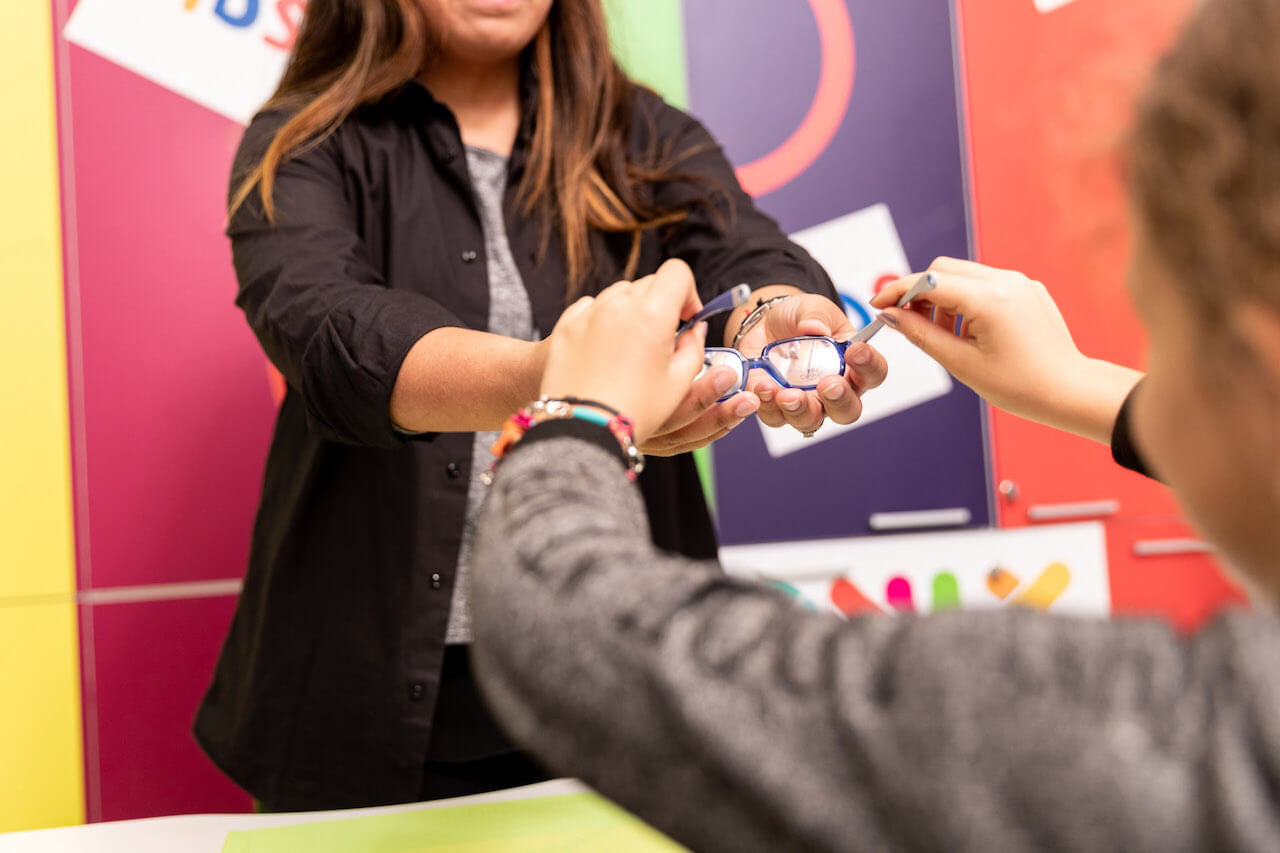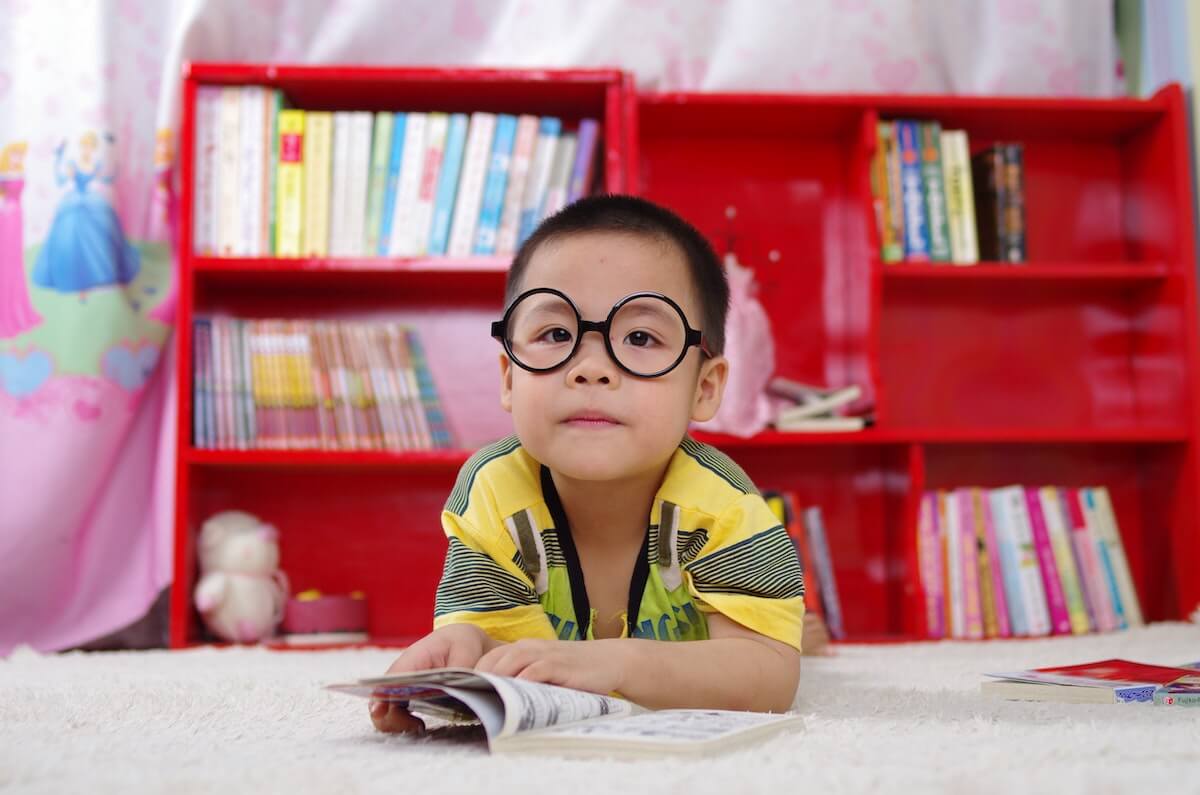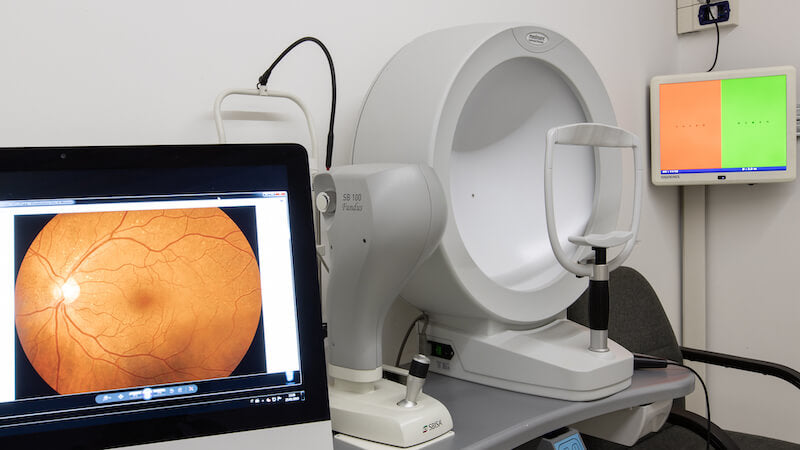Did you know?
TRY IN STORE
With ILOP, you can choose a pair of glasses online and book an in-store try-on.
Look for products with the "TRY IN STORE" button.
Simple, right?


Myopia in children: how to take care of it in the best way
Myopia is unfortunately an increasingly common issue, expected to rise significantly worldwide.
Carrying out preventive checks on the progression of myopia in children and adolescents is a topic of great interest, especially considering the increasing trend of the issue in the age group between 6 and 14 years old.

What is myopia?
Myopia is a common visual problem that occurs when the light rays entering the eye are not focused on the central part of the retina, known as the fovea. This imbalance is caused by a difference between the refractive power of the eye, the system that allows us to see images of the surrounding world, and the length of the eyeball. Myopic individuals often have an eye that is longer than average, which makes it difficult for them to see distant objects clearly.
There are two main forms of myopia: the mild-moderate form, commonly referred to as "simple," and the severe form, called "pathological" or "degenerative." Simple myopia is the most common form and is often corrected with the use of glasses or contact lenses. However, pathological or degenerative myopia can lead to serious eye complications, such as retinal degeneration, and requires proper medical management.
Myopia can cause significant visual problems, such as difficulty reading the board in class. For this reason, it is important to regularly perform eye exams to detect and manage myopia in a timely manner. There are also some preventive measures that can be taken. Let’s explore together how to successfully manage the issue from childhood, without preventing anyone from enjoying a clear and sharp vision of the world around them.

How to prevent and resolve the problem:
Myopia is a visual problem that affects many people around the world. According to studies, more than 60% of myopia cases develop in children between the ages of 6 and 7, continuing to increase during adolescence. This phenomenon has become a global concern for eye health professionals.
The main problem of myopia is that it can lead to a series of ocular complications, such as retinal degeneration, cataracts, and glaucoma. It is therefore essential to adopt precautionary measures to limit the progression of this visual defect from childhood.
Prevention is the best strategy for managing myopia. There are some measures that parents and children can take to help prevent myopia or limit its progression.
The first thing to do is to reduce the time spent in front of digital screens, such as computers, tablets, and smartphones. It has been shown that the time spent in front of these devices increases the risk of developing myopia.
In addition, experts recommend encouraging children to have an active lifestyle and spend more time outdoors. It has been shown that spending time outdoors helps prevent or limit the progression of myopia. This is likely due to natural sunlight, which seems to have a positive effect on eye health.
Finally, parents should regularly schedule eye exams for their children. Eye exams can detect myopia at an early stage and allow for timely treatment.
To address this issue, we offer a family of peripheral defocus lenses that not only correct the refractive defect but also help control myopic progression during the growth of children.
Prenota ora una visita oculistica per il tuo bambino
Compila il form per prenotare subito una visita oculistica gratuita per il tuo bambino. I nostri esperti sapranno darti i consigli giusti e, se necessario, guidarti nella scelta dell’occhiale da vista più adatto.
2025 ILOP S.r.l. - eCommerce: via De’ Musei 4, 40124 Bologna - Tel. (+39) 051 0826807 - P.I. 03799111202



